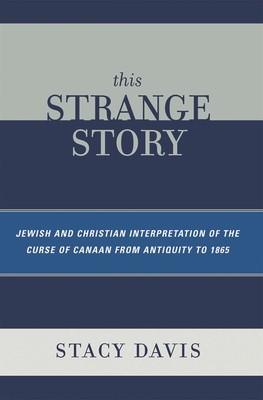
- We will send in 10–14 business days.
- Author: Stacy Davis
- Publisher: University Press of America
- ISBN-10: 0761838791
- ISBN-13: 9780761838791
- Format: 18.6 x 22.2 x 1.8 cm, softcover
- Language: English
- SAVE -10% with code: EXTRA
Reviews
Description
This book addresses the claim that an American antebellum era anti-African reading of "the curse of Canaan" story originated in rabbinic literature. By tracing the curse of Canaan's history of interpretation from the beginning of the Common Era to 1865, with particular emphasis on the neglected medieval period, this work examines this long-held false claim. Although Jewish readings of the curse of Canaan appear in medieval Christian commentaries, no Jewish references to skin color are repeated in Christian exegesis. Therefore, the book argues that the anti-African antebellum reading develops in response both to abolitionism and the biblical text's establishment of a social hierarchy that divides humankind into slaves and masters. The pro-slavery reading is an extension of Christian allegorical exegesis of the curse of Canaan, in which Shem, Ham, and Japheth represented different groups of people depending upon the interpreter's historical context, usually Jewish Christians, Jews or Christian heretics, and Gentile Christians respectively. Southerners and their allies simply changed the typology, making Shem the ancestor of brown people, Ham the ancestor of black people due to a reading of his genealogy in Genesis 10, and Japheth the ancestor of white people. The new typology justified African slavery as a divinely ordained and sanctioned economic system, just as the old typology justified Christian supersessionism.
EXTRA 10 % discount with code: EXTRA
The promotion ends in 20d.15:53:14
The discount code is valid when purchasing from 10 €. Discounts do not stack.
- Author: Stacy Davis
- Publisher: University Press of America
- ISBN-10: 0761838791
- ISBN-13: 9780761838791
- Format: 18.6 x 22.2 x 1.8 cm, softcover
- Language: English English
This book addresses the claim that an American antebellum era anti-African reading of "the curse of Canaan" story originated in rabbinic literature. By tracing the curse of Canaan's history of interpretation from the beginning of the Common Era to 1865, with particular emphasis on the neglected medieval period, this work examines this long-held false claim. Although Jewish readings of the curse of Canaan appear in medieval Christian commentaries, no Jewish references to skin color are repeated in Christian exegesis. Therefore, the book argues that the anti-African antebellum reading develops in response both to abolitionism and the biblical text's establishment of a social hierarchy that divides humankind into slaves and masters. The pro-slavery reading is an extension of Christian allegorical exegesis of the curse of Canaan, in which Shem, Ham, and Japheth represented different groups of people depending upon the interpreter's historical context, usually Jewish Christians, Jews or Christian heretics, and Gentile Christians respectively. Southerners and their allies simply changed the typology, making Shem the ancestor of brown people, Ham the ancestor of black people due to a reading of his genealogy in Genesis 10, and Japheth the ancestor of white people. The new typology justified African slavery as a divinely ordained and sanctioned economic system, just as the old typology justified Christian supersessionism.


Reviews